Jason Perna Sensei is Chief Instructor of Old City Aikido in Philadelphia, PA. He began practicing Aikido at the age of 17 and now brings over 30 years of practical experience to his daily training and teaching. His upbringing in traditional Iwama-Ryu, as well as many years of training in Aikikai Aikido, gives him a well-balanced approach to his understanding of the art and teaching methodology. He also practices the art of Brazilian Jiu-Jitsu which he utilizes to better understand the connections across arts, and to maintain a grounded, practical approach. Jason is a full-time professional Aikido instructor and holds the rank of 5th degree black belt.
Aikido Journal (Josh Gold): Thank you for joining us today Jason. Please tell us your martial arts origin story.
Jason Perna: My origin story begins with the typical fitness center karate classes as a child, which I did, and enjoyed. Fast forward to high school, 1991, my junior year. I waited to get my driver’s license to begin practicing Aikido, because the nearest school was about 40 miles away, and a regular ride to practice was hard to come by in those days. That was the beginning of my martial arts story.
My first dojo was in New Jersey, led by Richard and Kathy Crane Sensei. It focused on traditional Iwama Ryu Aikido, and it was there that I built a strong foundation in weapons training. By 2002, I transitioned to Aikido of Center City under the direction of Donovan Waite Sensei, where I eventually earned my black belt. His style was big, and flowing, and differed from my initial training in many ways, but I was grateful to find a teacher who still placed a high level of importance on weapons. At some point along the way, I developed a correspondence with Reverend Kensho Furuya Sensei from LA, whose guidance meant a great deal to me and whose memory I will always cherish.
It took some time, but eventually I found Jiu-jitsu in my early forties. My first exposure was with my private coach and good friend Judah Ciervo, with whom I also explored a bit of basic boxing and Muay Thai. When I decided to practice Jiu-jitsu more regularly, I found a great local school, 609 Jiu-jitsu, to continue to polish my game. It’s worth noting that I’m 30 years on with aikido now and creeping up on a decade in jujitsu. It’s surprising that it goes so fast, but it does. I have been very fortunate to have great teachers and training partners along the way.
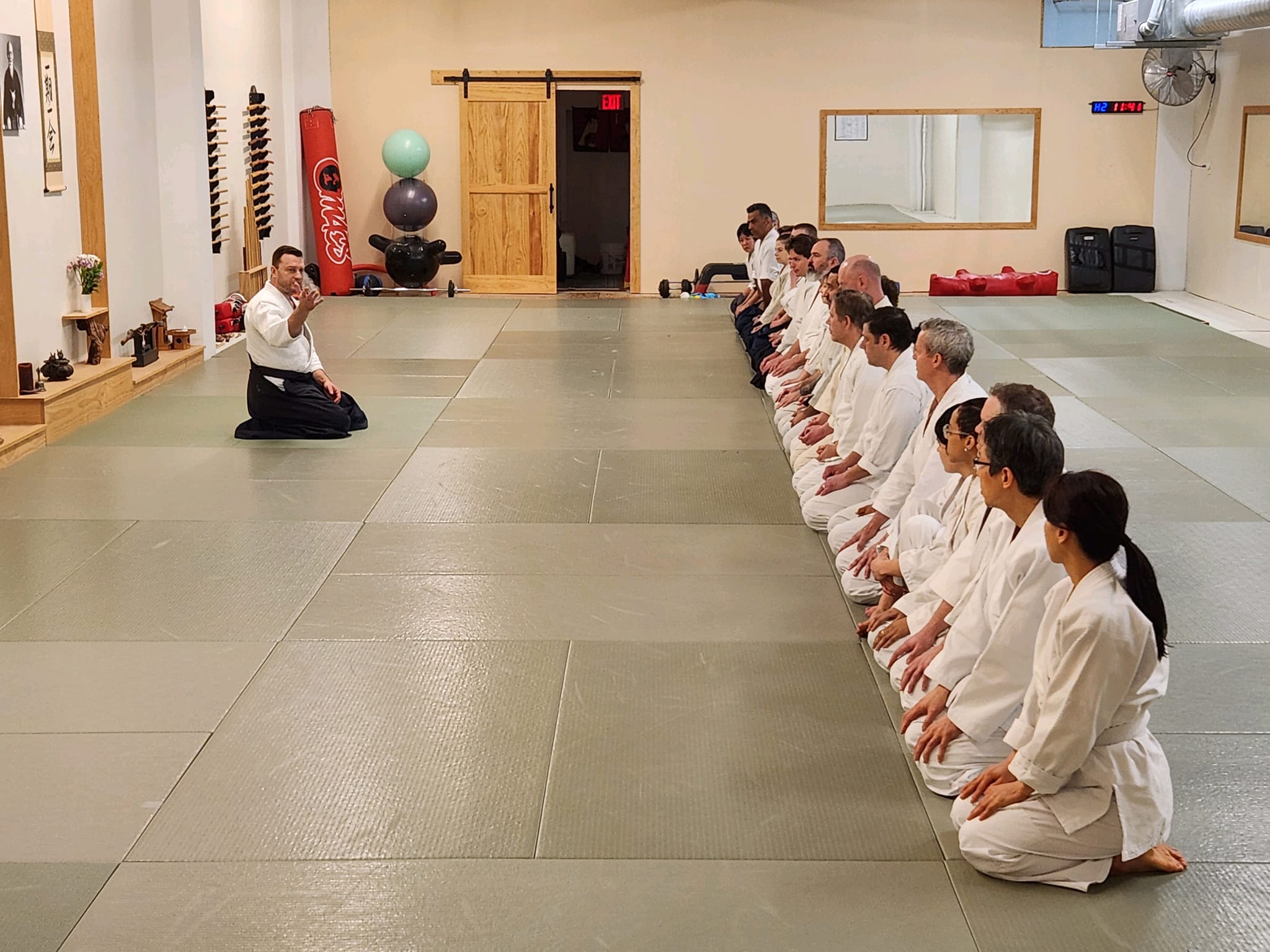
Congratulations on the 10th anniversary of your dojo. Tell me about the founding of Old City Aikido and what it’s been like running it.
Thank you, I think it’s an important milestone for a school, it just kind of says you’re hanging in there. Early on, there were a lot of challenges, many related to having split with my teacher. It was tough emotionally and mentally just being in the space and not knowing how I was going to carry on there without him. In a sense, sometimes even when things aren’t going well, you still love your teacher, you still miss your teacher, you still wish that things had gone better.
Beyond that, the joys and struggles of running the dojo are probably found everywhere. It’s about personal relationships, finding the next student, losing the last one, bills, bottom lines and deadlines; but ultimately if one is managing everything well, it really comes down to the work on the mat. If people can respect that part, then it’s possible to keep going.
I always find it really difficult to lose good students because of life circumstances. The teacher/student relationship requires a great deal of care and energy to properly cultivate, and sometimes it is interrupted leaving a feeling that there was still a great deal left to accomplish. I think for me that is probably the toughest part. On the positive side, I get to come to the dojo everyday to practice martial arts, and the fact that my life has taken me in this direction is a true blessing. When you’re able to get out of bed every day, and you’re going to practice martial arts and you get to share it with people, that’s an incredible feeling.
What’s your student base like?
I’m happy to say we have a really great mix right now. At any given time the dojo is about 50/50 men and women, we have students of all ages, and over the last couple of years, the kids program has been growing. I lost 100% of our youth program over covid, so I’m happy to say that it’s made a return and is strong. As we discuss some of the challenges that modern Aikido is facing, I think building strong youth programs can be an important part of the solution. Perhaps they will foster a love for the art now that they will carry forward- maybe a new version, maybe a better version.
“I always find it really difficult to lose good students because of life circumstances. The teacher/student relationship requires a great deal of care and energy to properly cultivate, and sometimes it is interrupted leaving a feeling that there was still a great deal left to accomplish. I think for me that is probably the toughest part.”
I teach our youth students a healthy mix of Aikido and Jiu-jitsu, and I allow them to “go live” or spar at the end of most classes. I don’t make it about submissions, but I allow them to mix it up a bit so they can see what they can do, and they are always very excited to do so. I think it’s good for them, and I think it’s been helpful for retaining students in the program.
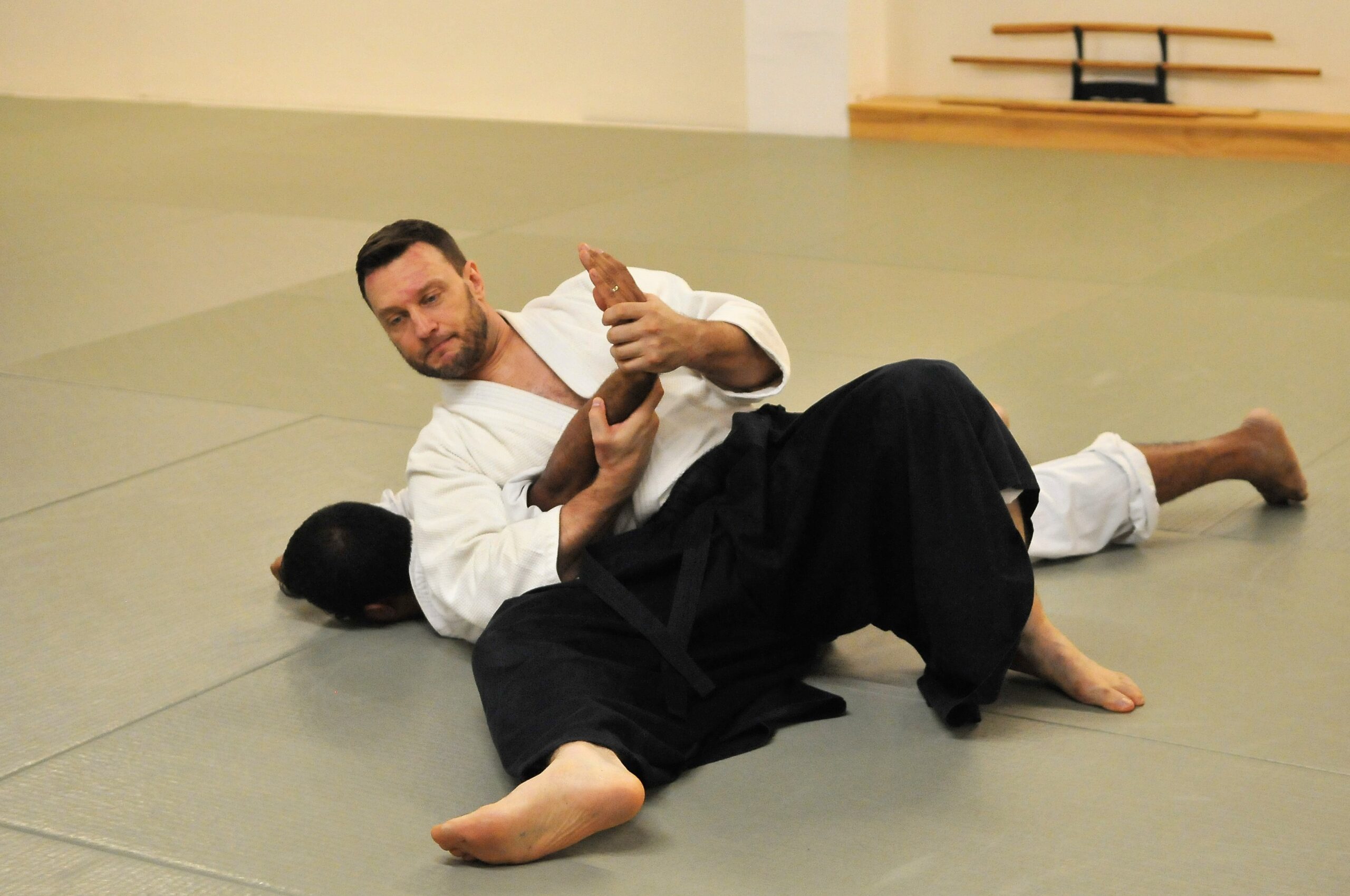
What do you want your students to gain from their training?
I’d like them to receive as well-rounded a martial arts education as I can possibly provide, while also making sure that they understand reality. My students hear from me pretty regularly that I don’t have all of the answers, and that there is nothing I can show them that will always be effective. In that sense, I ask them to maintain a constant humility in their own abilities, and above all, to cultivate sincerity in their practice.
As for the physical practice, we do it a bit differently. At Old City Aikido, it is very common for us to be working from the grips for either Judo or Jiu-jitsu style takedowns. I also encourage them to incorporate active atemi whenever possible. Clearly we can’t strike each other in the face over and over, but it is not uncommon in my school to see atemi delivered to the body with maybe 20% force in order to elicit a sincere response and earn a true kuzushi. I think this is important for understanding how to apply technique when the other person doesn’t wish to just fall down. And of course, all of my students have become quite familiar with ground techniques and tactics, many of whom now practice Jiu-jitsu with me as a stand-alone art.

All of that said, It’s important for me to maintain the fundamentals. I grew up with the fundamentals. I want them to know what the basic shapes are. I’ll begin my classes with what I call the A B, C’s or the textbook version of techniques, but by the end of almost every class, we are looking at my personal take on the classics. I share my personal feelings on a technique and two or three possible alternatives that may be somewhat more effective if one is running into trouble with the basic form.
I’m happy that those things are developing day to day right now at Old City Aikido. Each day we’re breaking down techniques and my students have gotten good enough at pressure testing them that they’re asking me smart questions about where some of the openings are, which is forcing me to think about how I would like them to close them. It’s an extremely rewarding and exciting way to teach and practice.
To finish the question, I guess what I’d like my students to do most is go beyond me. I’d like them to have a good understanding of the fundamentals, to understand where I am personally trying to take the art, and then transcend all of it. I believe that’s the way they continue to grow as martial arts students. I often say to them that I am only a temporary caretaker. If they truly want to do something significant with the art, they will need to make it their own and carry it forward. That is my wish for them.
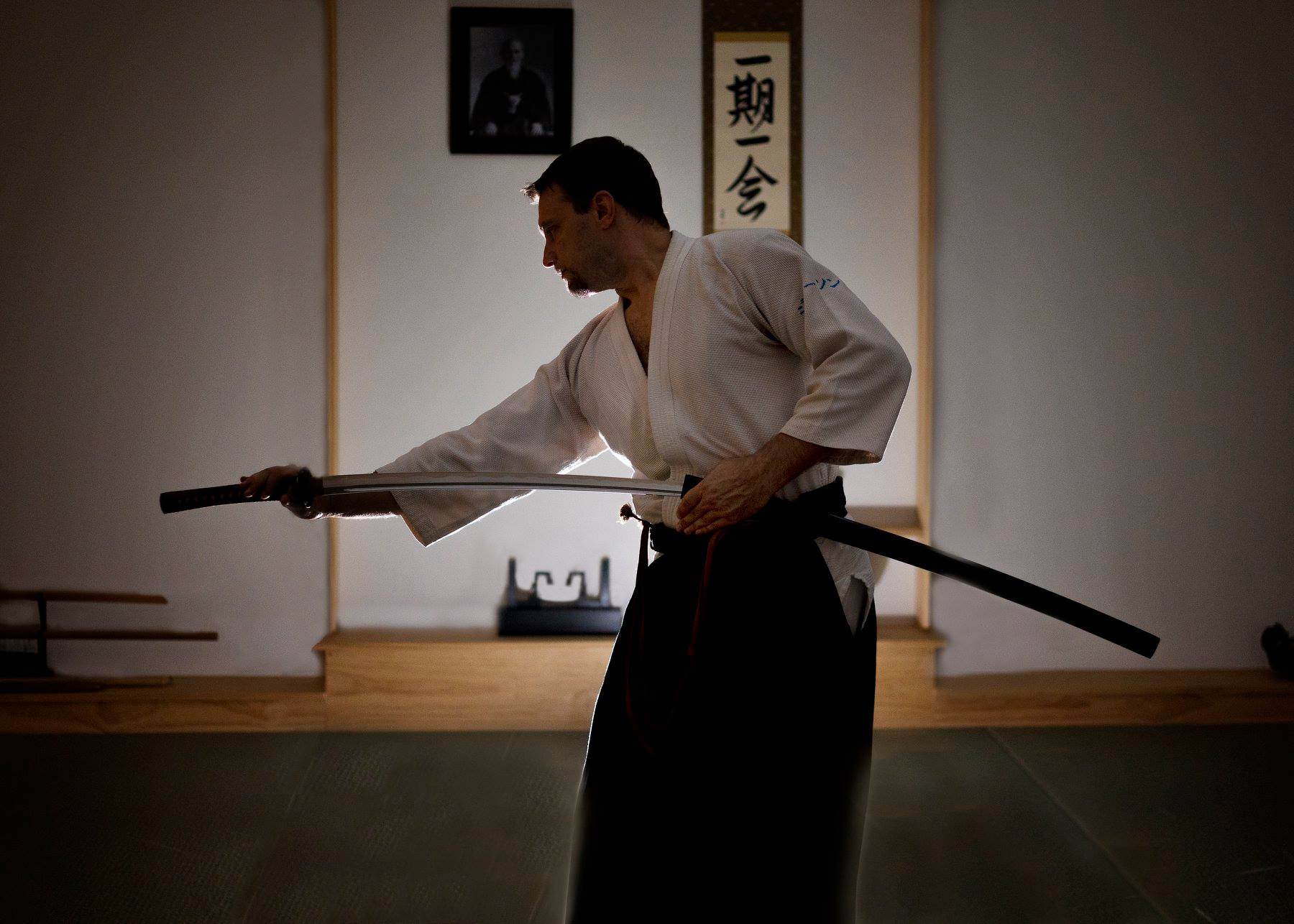
“What I’d like my students to do most is go beyond me… I often say to them that I am only a temporary caretaker. If they truly want to do something significant with the art, they will need to make it their own and carry it forward. That is my wish for them.”
What are people looking for when they join your dojo?
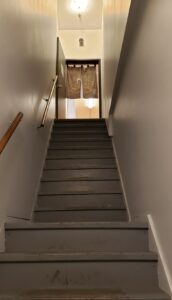
It’s funny, we have these flights of stairs. People have to come up them, and for years when they get to the top, and I always ask them, “So, why did you come to an Aikido school? I’ve been asking this question for probably 20 years, and I’ve never once gotten the answer “To learn Aikido.” The day I get it, I’m going to bow deeply to that person and maybe offer them my job (smile). Of course, I get all of the typical stuff people say – self-defense, community, spirituality and the like, but regardless of what brings them up those stairs for the first time, I like to think it is the training that keeps them coming back. It is always very rewarding for me when people from other Aikido backgrounds come to train with us and see how different and challenging their experience here is going to be. Those who stay will often express to me how grateful they are to have found this type of training, and that they had been searching for something they felt was more tangible. It’s not for everyone, and that’s ok. Some come thinking they will just carry on as they were at their last school, and those folks tend to disappear rather quickly, and that’s okay. As with most things, if it’s not in one’s heart, they will simply move on.
Ellis Amdur recently wrote an interesting editorial on the challenges traditional martial arts are facing today. What are your thoughts on how Aikido is doing in 2024?
Aikido definitely has its challenges. I don’t think there’s any way around that. Of the demographic of people who are typically coming to martial arts schools today, Aikido is often not the first choice. And that’s something we need to think about and try to figure out. Sometimes I wonder if the art is being cared for the way O-Sensei had hoped. I think we’ve adopted an attitude toward preservation over innovation. And I think it may actually be possible to, in a sense, preserve something to death.
I can say from my own experience, it was well established in my mind that no one will ever achieve the level of O-Sensei; it is an understanding that is simply unattainable. I suppose it’s okay to hold him in such high regard, he is our founder and by all accounts was a truly special person, but I worry that the idea the rest of us will never get there has become a self-fulfilling prophecy. Look, I wasn’t there; I didn’t see it, I didn’t feel it, and surely I don’t understand it, but if we aren’t actively encouraged to figure it out and go beyond it, then I’m not entirely sure what exactly we are supposed to be doing.
I think Aikido has a strong message to offer with the notion of not really competing in the art, but I think the way we are going about it is probably not ideal. We are all raised with the often-repeated idea that “True victory is self victory.” I like it, but I think how we get there really matters. I think it’s okay that we don’t go out and compete at some sanctioned Aikido match to win a trophy, but we should be fighting those battles (with ourselves) each day in the form of real pressure testing on the mat. I just don’t see any way around it if one hopes to achieve a sincere level of martial effectiveness. We need to fight those small battles, and quite frankly lose them, a lot of them, if we hope to learn something honest about ourselves. If it were up to me, and of course it isn’t (smile), I would tweak the old saying to be something more like, “True victory is victory over a well and thoroughly defeated self.” Whatever is left of that self is what I am interested in finding.
“Sometimes I wonder if the art is being cared for the way O-Sensei had hoped. I think we’ve adopted an attitude toward preservation over innovation. And I think it may actually be possible to, in a sense, preserve something to death.”
So yes, we have some challenges, but I think there is also some good news that we can build upon. First, people are waking up, and that to me is a good thing. Younger people these days are very discerning and results driven, and I believe that forces us as teachers to be at the top of our game, to constantly reevaluate and improve things as we go along. We can begin to show that we are doing the work of bringing the valued traditions up to a modern standard, as more people begin to see exciting and effective Aikido techniques in their newsfeeds, we can build some real interest. It can’t continue to be stiff and stale if we want to present our best case to the next generation of martial artists.
Next, and this is a big one, where people may shy away from competitive combat sports, I truly believe we have the ability to reach absolutely everyone. I came to Jiu-jitsu after 40, so I understand the reluctance of some to come in each day only to get smashed by younger more explosive training partners. If I weren’t already a lifetime martial artist with a strong understanding of how to train safely and effectively, I don’t think I would still be hanging in there. With these concerns in mind, Aikido is well-positioned to offer students of all ages and abilities the possibility to learn martial arts, but we need to hold up our end of the agreement. They may not wish to be smashed every day, but they still want something tangible, something effective, something real. We owe them that, and it is in no way unreasonable for us to deliver. Yes, I’m going to make you uncomfortable at Old City Aikido; I believe a good part of my job demands it, but I will make you uncomfortable exactly to your level and make it possible for you to keep building upon that slowly and steadily. Safe environment, slightly lower impact and injury, but still effective and accessible to everyone, Aikido needs to build that brand.

Lastly, there is Budo. Yes, it’s mostly misunderstood and over-romanticized, but if done properly, it is something that differentiates an art like Aikido from modern combat sports. The trick is not to allow philosophy and theory to be the main focus, sometimes treating the physical practice like an afterthought. Hopefully, we can learn to strike the proper balance. I have often remarked that I believe Aikido would benefit greatly by incorporating more of the physical elements from Jiu-jitsu training, but Jiu-jitsu could also learn a lot from the more spiritual elements of Aikido, the “way of the dojo” if you will. Building strong physical technique is paramount, but learning to temper that strength is an invaluable part of training, and in this regard, the tenets of Budo can be a great asset. So anyway, there is some good news. I see some of my contemporaries out there right now trying in earnest to move the art forward in a way that is sincere, effective, accessible, and doesn’t forget about tradition. If I were a prospective martial arts student, I would be very interested.
I agree. I’ve been impressed by a number of people who are doing what you describe – trying to move the art forward without leaving the traditions behind. It’s important to have some folks in the Aikido community trying out new things – so long as they are grounded in experience and respect for the art. Putting some new approaches out there and seeing how aikido practitioners, and maybe more importantly, people outside of the aikido world, respond is a good thing. I know some people think we shouldn’t care too much what people outside of Aikido think about the art, but that group includes everyone who can, and will, become practitioners in the future. If we don’t resonate and connect with them, the art has no future.
I can tell you that in my experience, when I am in a situation like the anniversary seminar we just hosted, it can be split between those who seem to be truly interested in the kinds of things I am doing with the technique, and those who really want nothing to do with it. It seems to break down in terms of younger, more inexperienced students being quite interested, and older more established (higher rank) students being less interested, even put off by it. I don’t find that surprising. Often, higher ranked students don’t want to look like beginners again while learning new concepts. I understand, it can be very humbling. But in the end, if we don’t at least try, everyone suffers from stagnation.
At my dojo, I find that when we start adding extensions into training, whether it’s grappling or striking, younger people are very enthusiastic about it, and they relate to the practice much more quickly.
And the thing is, all of them have empty cups, so how they are raised in martial arts has yet to be determined. Speaking only for myself, I feel I owe them something more in their daily training. They are entrusting me with their martial education, and I take that very seriously.
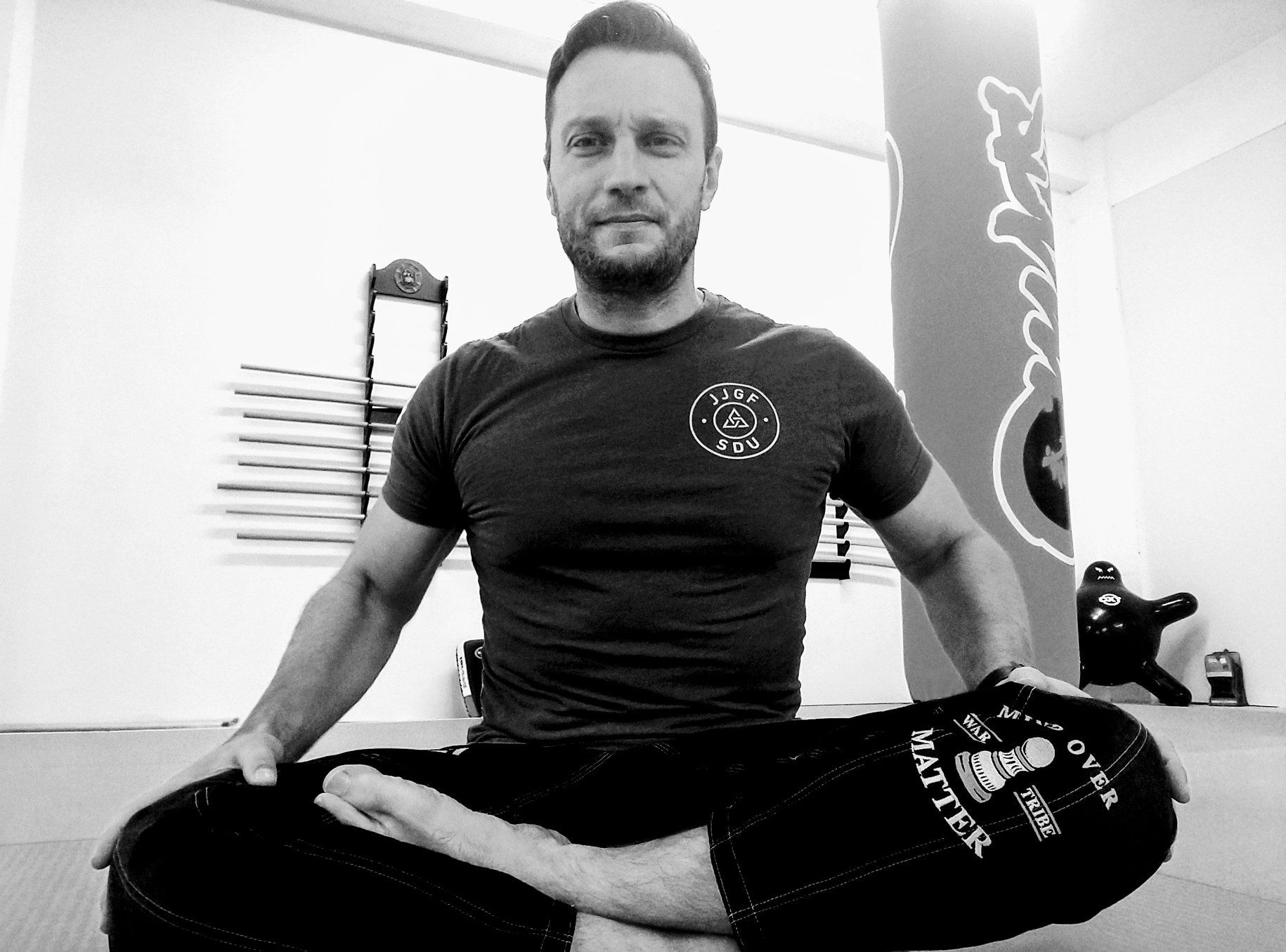
Any other thoughts you want to share with the Aikido community?
In my reasoned judgment, Aikido is at a crossroads. We need to figure out what we want to be as an art, and what we are trying to accomplish. On its current trajectory, it looks to me like the art will end up becoming mostly a system of organized, paired body movements, and the forming of spiritual connections to those movements; but the martial aspects are going to continue to fall away. Or, we can take a real interest in what is lacking and look to fill some holes. This is what I have been doing in my own personal journey, and it is reflected in the progress of the students at Old City Aikido. I am not looking to redefine everything. I’m not a fighter, I don’t compete, and I still believe in the core principles, but I am constantly trying to improve the martial effectiveness of the curriculum, and if it means sacrificing some of what is considered traditional, well, it’s a sacrifice I am willing to make. I’m sure that will offend some, but for me, business as usual just won’t do.
If ultimately the Aikido community decides to go the other way, that’s okay too. I don’t want anyone to misunderstand what I am saying; I have nothing but respect for anyone who gets up every day to do something like Aikido, no matter what direction it ultimately takes. This is about figuring out what I will do with the art I have been given, and though I do feel some sense of responsibility to help move the art forward, it is ultimately a deeply personal decision. I just hope the art will allow a little room for teachers like me. I won’t always get it right, but I am trying.
Steady on…
You can visit Jason at Old City Aikido in Philadelphia, or find him on Facebook or Instagram.
Donate to Old City Aikido’s 10th anniversary fundraiser here.













Fantastic interview! I’ve know Jason for years and he is an amazing teacher/student/artist/warrior as well as a genuine person. We need more like him pushing our art forward and looking toward the future.
Very interesting article and thinking. Thank you!
I have had the honor of training under both Donovan Waite Shihan and Perna Sensei. Waite Sensei helped us to learn how be effcient with each movement and effective with technique both with weapons and open hand.
Sensei Perna has not only preserved these principles, but also integrated learning from other forms of martial arts to enhance and compliment the traditional structures of Aikido.
As a person who was the victim of an unprovoked attack, it is important to me that my training help me to effectively preserve myself and my attacker while interrupting their attack.
Being able to apply nikkyo and sankyo during live Brazilian jiu-jitsu rolls helps to reinforce their effectiveness and offers opportunities to apply them from an unfamiliar position. These types of application help me to better understand what basic elements are needed and give my training partners opportunities to reverse my choices or help me to become aware of weaknesses in my posture or execution. All of this is happening before I am in a real world situation.
Fortunately, I have not been involved with another attack, but I am confident that the practical and rigorous training will help me to know what kind of things I should try to do (get out and get away) and what kinds of things I should be careful to avoid (giving an attacker your back).
I am profoundly grateful to O Sensei for the gift he has shared with us, to Sensei and to all of the senpai who have cared for me as they challenge me to be a better martial artist and training partner. Thank you Josh and Aikido Journal for highlighting the good things happening in Philadelphia.
Thank you Jason for your efforts to provide a “martial” expierience for your students, I like the “go live” aspect of the class. I suspect it gives those who elect to participate a more realistic understanding of how, if, and why they could or could not execute a technique on a less than cooperative partner. IMO, serious practicioners would embrace the opportunity to hone their skill set.
Given differences in height, weight, physical strength, agressiveness etc. few if any will be able to execute every technique in the Aikido playbook outside a dojo setting. Offering options to achieve a comparable objective distinguishes those with a passion to teach from those who follow a script.
There are several reasons one joins a dojo and the business characteristic of operating a successful one should address each of them. Aikido purists may find themselves excluding more than a few.
Having trained more than a few years in “traditional” Aikido, a couple in Close Quarters Combat and now with an instructor whose former career afforded the oppurtunity to test the application of martial tecniques in real world experiences I can unequivocally state that MEANINGFUL ATEMI, physical or verbal facilitates kuzushi the first objective in a confrontational interaction.
All or at least most of O’Sensei’s direct students trained hard and were proficient in multiple martial disciplines. Hopefully you and likeminded instructors can call attention to the martial facet of O’Sensei’s Aikido.
Excellent interview! Very inspiring. Jason Perna Sensei’s gives valuable insights born of his many years of aikido and BJJ training. It is great to see such progressive views on aikido and to know that he has a thriving dojo. Taking people to their edge can be what folks need but is not always the most popular. Bravo Jason! I’d like to take your class, next time I’m in Philadelphia. This interview has made me even more curious about your work.
My first experience with Perna Sensei and Old City Aikido was when I attended the “Deconstructing Ikkyo” seminar in September 2021. I had been practicing Aikido for 8 years and had never been exposed to anything like that, I had to join Old City Aikido right away.
Perna Sensei approach is truly unique, when I started I found the extensive weapons curriculum coupled with a provocative take on fundamental techniques both daunting and exciting. Learning and perfecting the fundamentals is a big part of our training, yet when appropriate, Perna Sensei builds upon the technique to introduce innovative endings and pins. Once I joined the jiu-jitsu program the benefit of ground techniques and sparring became quite clear. I find Jiu-jutsu practice important for Aikido; it forces us to deal with factors that are not necessarily included in Aikido techniques such as weight, strength deficits, fear, tactics (when you spar the outcome is unknown) and resistance. Far from departing from aikido, Perna Sensei’s innovative approach is reinforcing and opening a whole new world of possibilities for the tradition. I can’t wait for next class…
Great Article !! Perna Sensei is spot on regarding his philosophy regarding the advancement of the art. This is the second of such articles I have read from Perna Sensei focusing on this topic. As with many, I have been training in martial arts since I was a kid. Having found Aikido 8 years ago, I noticed early on in my Aikido journey that “the way” in many of these Aikido dojo’s means “Do it My Way”.. There is no tolerance for thinking outside of the box or bringing in an experience that differs from that of the way it has always been done. These environments foster complacency rather than development. My last dojo I left for this reason, shortly before testing for Shodan. Deciding to leave Aikikai for Tomiki style, the attitudes still persist unfortunately, sometimes worse. Trying to find a teacher and a school with Perna Sensei’s forward-thinking approach, even if it means being unpopular in the Hombu / Aikido circles, is tough to impossible to find in the Aikido Community. Those that have the opportunity to learn, train and be a part of his Dojo are fortunate and should not take it for granted.
Tradition & fundamentals are important and should be continually practiced so we have a foundation and connection to our art however change is necessary for advancement in anything we do in life. Without change, there is no growth. Human beings become stagnant, learning becomes boring and unfulfilling. Unfortunately, in my experiences, many Dojo’s have not embraced the concept of change, they are stuck in the methodologies of the past, long for the way it was done by their teacher, not seeing outside themselves as instructors and mentors that there are other ways to do things, that the attitude “this is the way it always has been done” runs rampant and is not appealing to new and experienced students alike. Rather than changing and growing, they stay stuck in their own world and then don’t fathom why students don’t come to class regularly or that student’s simply drop out. No students, no art to pass along, no dojo will remain. It really is that simple. Change is necessary and Perna Sensei embodies that. Other teachers, both young and old should take a cue from him.
If ever I am in the Philadelphia area, I would love a chance to train with Perna Sensei.
I’m very grateful to have found my way to Sensei’s Perna’s school, where I’m humbled each time I practice. That extra effort to truly analyze if something is practically working or not takes a dose of humility that can be difficult to ingest at first, but it’s proven, at least for me, to improve my technique and utterly change the way I view Aikido.
Referring to Sensei’s words that it’s a personal choice as a teacher to move the art forward, I believe it’s an equally personal choice as a student to take that on. But I’ve found, personally, the battle is entirely internal. When I go up those stairs I’m quieting my ego that just wants to be “great” this many years into training. But great doesn’t matter, I’ve found, nearly as much as being effective. Great to me is another way of saying “comfortable”. Effective can be imperfect, stuff can go wrong in the moment, and I’ve learned that that’s okay, because what matters is what you do when everything falls apart. I’ve grown a lot working through the difficulties and the deficits of my personal training, and I’m grateful to Sensei for giving me a space to fail truthfully and try again.